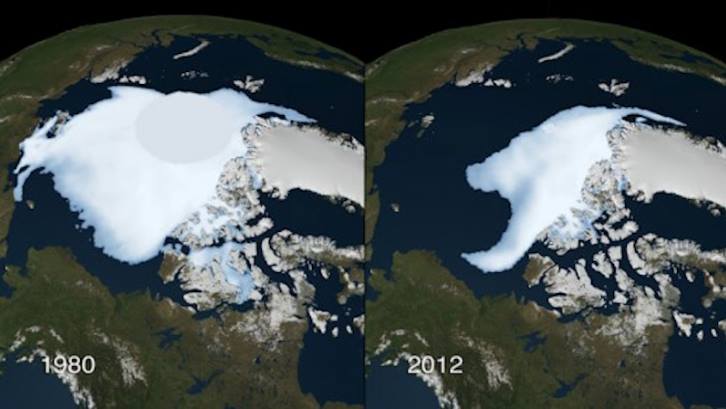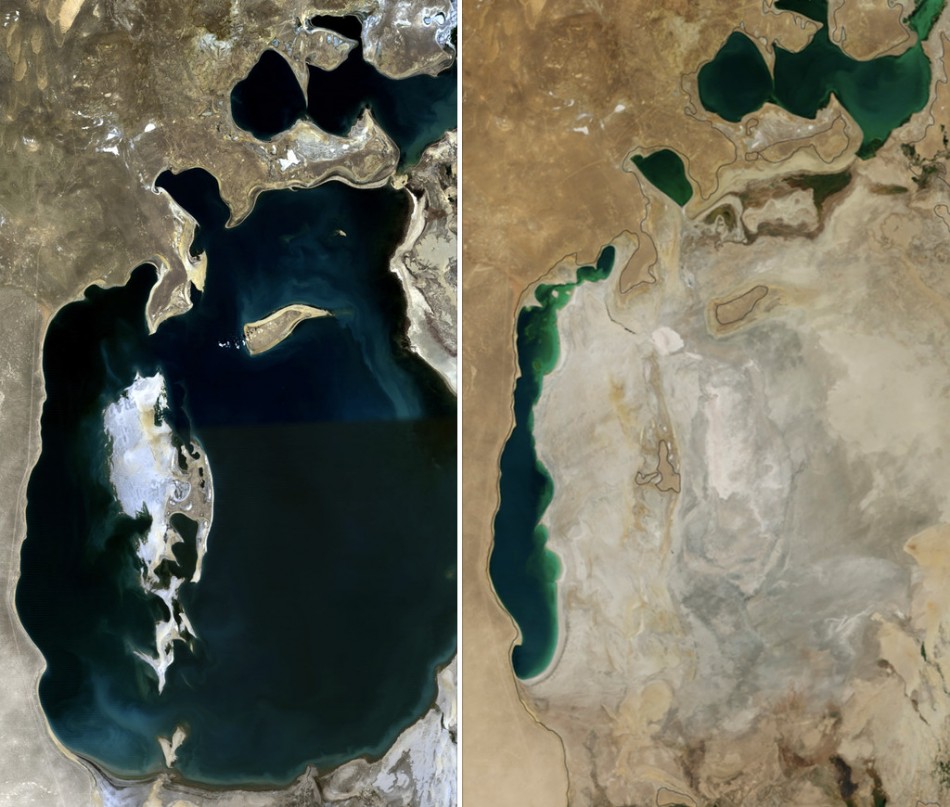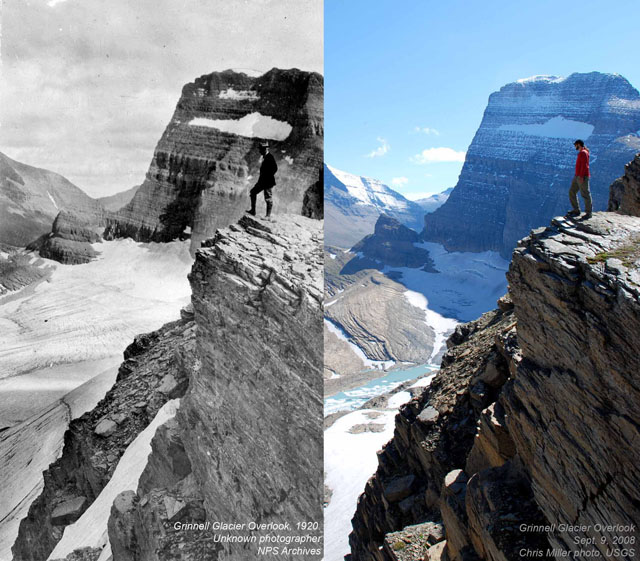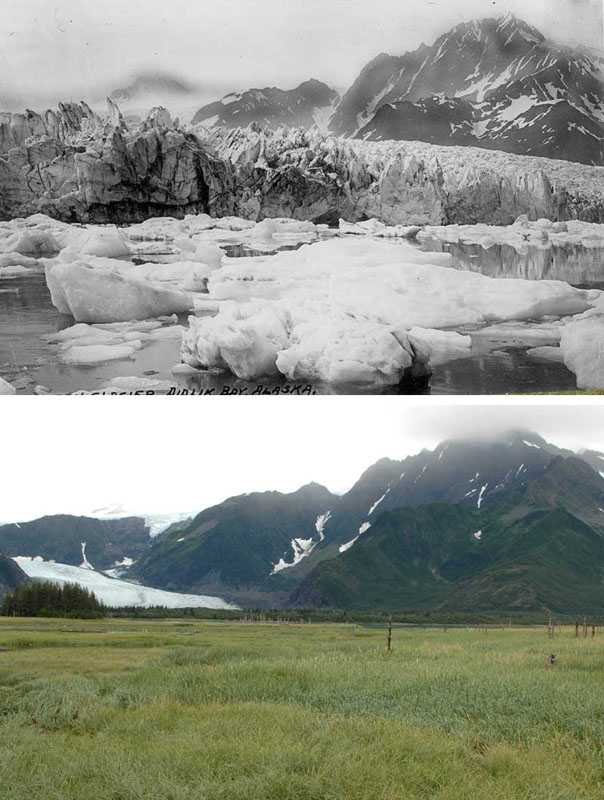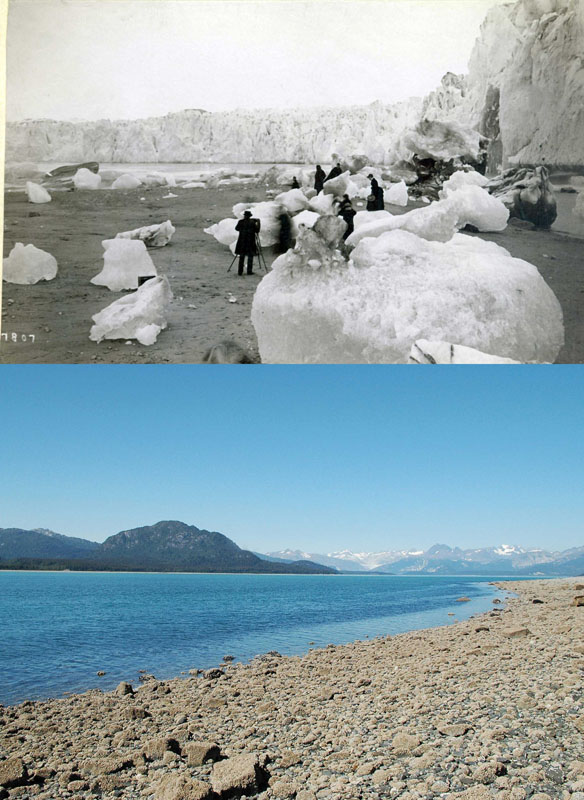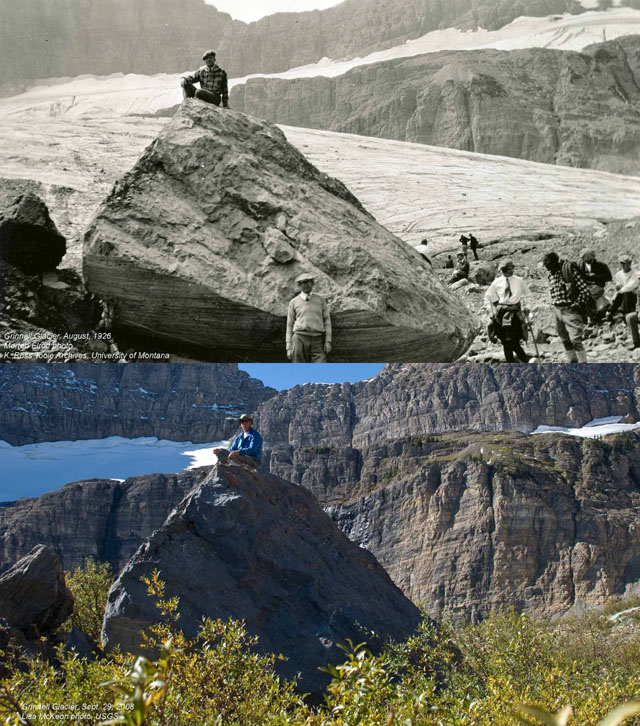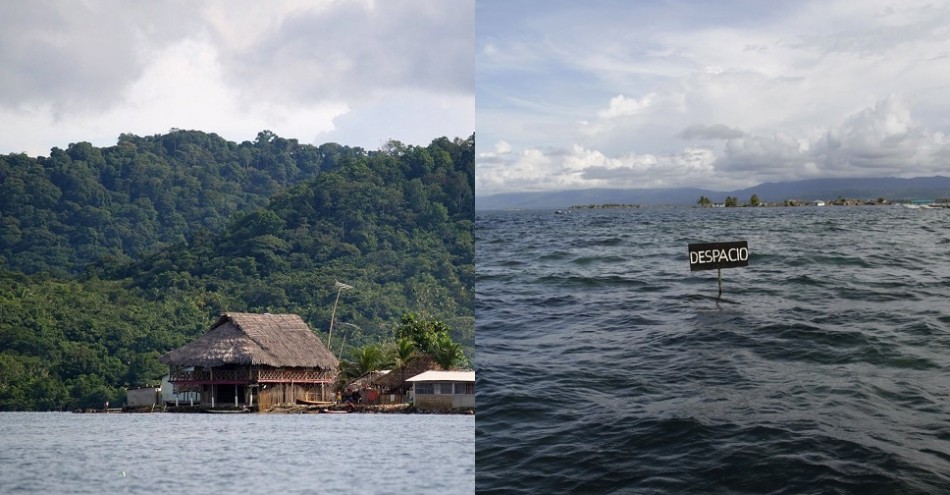- Climate change could subject an additional 600 million people to malnutrition by 2080.
- We’re on track to see global temperatures rise up to 4°C by the end of the century.
- Ocean levels on Earth have risen an average of three inches in the last 23 years; and could swell an estimated three feet in the next century.
- The warming that we’ve seen in the last 30 years is due to human-made greenhouse gases.
Sounds familiar yet unreal? While these facts are truly shocking, some of us just refuse to accept the reality. Well, Climate Change Is Depressingly Robust.
The US Geological Survey is using Repeat Photography to document the progression of global warming and visually convey that climate change is real and happening. The striking photos are created by pairing historic images, from the 1800s to the early 1900s, with contemporary photos of the same landscapes to give global warming a face and make climate change a relevant issue to viewers. The project covers Montana’s Glacier National Park, as well as public parks and forests in Alaska.
While Russia claims global warming is nothing more than a western fraud, (so does this scientist) America offers evidence that global warming is not only ongoing – but is having real, and drastic effects on the world around us. Take a look at these 20 before-and-after images that reveal the impact of climate change – the results are shocking, and speak for themselves:
Arctic ice, 1980 and 2012
Aral Sea, 1989 and 2014
1920 and 2008: Grinnell Glacier Overlook in Montana.
1930s and 2005: Alaskan Pedersen Glacier
The Enterprise Bridge passes over a section of Lake Oroville in 2011 (left) and 2014 (right) in Oroville, California, which is experiencing “exceptional” drought.
Bleaching of the Great Barrief Reef, 2002 and 2014
1880s and 2005: Alaskan Muir Glacier and Inlet
1926 and 2008: Grinnell Glacier in Montana
The San Blas archipelago in Panama, 2002 and 2014
Aral Sea shrinkage, Central Asia, 2000 and 2014
Melting Muir Glacier, Alaska, 1882 and August 2005
Shrinking Elephant Butte Reservoir, New Mexico, 1994 and 2013
Deforestation of Mount Kenya Forest, Kenya, 1976 and 2007
Melting ice in Ecuador, March 1986 and February 2007
Shrinking Mar Chiquita Lake, Argentina, 1998 and 2011
Deforestation in Rondonia, Brazil, 1975 and 2009
Deforestation of Baban Rafi Forest, Niger, 1976 and 2007
Shrinking Lake Urmia, Iran, July 2000 and June 2013


Climate change makes so much more sense when illustrated with a Domino's Pizza Tracker https://t.co/TW1gslBYrs pic.twitter.com/lhz7VUV7lz
— Huffington Post (@HuffingtonPost) November 2, 2015
Daniel Fagre, a Research Ecologist at USGS, says Glacier National Park’s namesake glaciers have receded rapidly since the Park’s establishment in 1910, primarily due to long-term changes in regional and global climate.
“In the last century, the five warmest years have occurred in the last 8 years – in this order: 2005, 1998, 2002, 2003, and 2004. This warming is ongoing and the loss of the Park’s glaciers continues, with the park’s glaciers predicted to disappear by 2030.”
So who shall we trust now, America or Russia?!
Originally written by Vandita and published on anonhq.com

